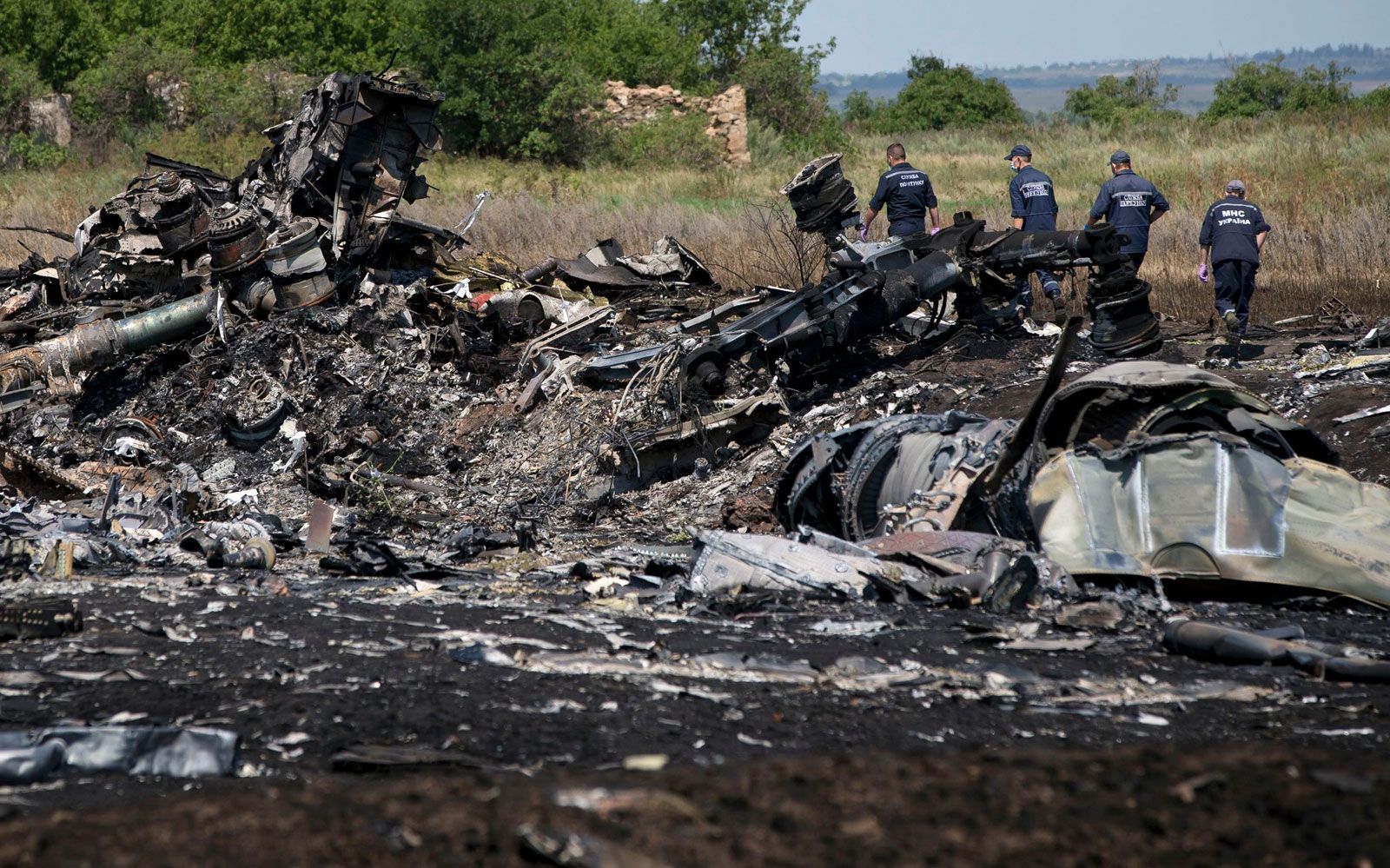
What caused the tragedy of Malaysia Airlines Flight 17

On July 17, 2014, a tragic event struck the world of aviation when Malaysia Airlines Flight 17 (MH17) crashed in eastern Ukraine, leading to one of the deadliest airline disasters in recent history. This scheduled flight was en route from Amsterdam to Kuala Lumpur, carrying 298 passengers and crew members, most of whom were Dutch nationals. The plane was tragically taken down amidst a backdrop of rising tensions in a conflict zone, resulting in worldwide sorrow and outrage. As investigations unfolded, it became evident that the flight was not merely a victim of flights accidents but rather a shocking consequence of escalating geopolitical strife.
The implications of MH17's airline incidents and accidents extend far beyond the immediate loss of life, prompting critical discussions about air safety protocols and international conflict zones. Understanding the multifaceted causes of this tragic occurrence is crucial for preventing similar airline incidents in the future. In this comprehensive article, we will delve into the key factors that led to the demise of MH17, examining witness accounts, investigation findings, and the broader implications of this horrific airline crash.
Background of Malaysia Airlines Flight 17
Malaysia Airlines had been operating for several decades and was known for its service on various international routes. However, on that fateful day in July 2014, Flight 17 operated as a scheduled flight from Amsterdam to Kuala Lumpur, carrying an international group of travelers. When flight MH17 took off, the aircraft's flight path took it over a conflict zone where an armed conflict was occurring between Ukrainian forces and pro-Russian separatists.
The airline disaster would leave a deep scar not only on the families of the victims but also on the aviation industry at large. As investigations proceeded, authorities quickly turned their attention to the airline incidents and accidents involving commercial flights that traverse conflict areas. The urgency of establishing more effective safety measures became an immediate priority.
The Flight Path and Conflict Zone
Malaysia Airlines Flight 17 was operating at an altitude of 33,000 feet, following a flight route that had been deemed commercially viable despite the ongoing conflict in Eastern Ukraine. Prior to the crash, Ukrainian authorities had issued a series of minimum-altitude restrictions in response to intelligence reports regarding the presence of surface-to-air missile systems in the region. These restrictions aimed to ensure the safety of civilian aircraft during a time of escalating violence.
Despite the guidelines, Flight 17's altitude was still within a range susceptible to missile strikes, and as the aircraft traversed the conflict zone, it remained vulnerable to potential attacks. This catastrophic airline disaster occurred in an area where pro-Russian separatists were heavily armed, significantly raising the risks associated with any flights accidents occurring in the vicinity. The conflict's volatility drew sharp scrutiny from aviation safety experts and regulatory bodies trying to enforce stricter guidelines for flights crossing dangerous territories.
The Moment of Impact: Witness Accounts
Witness Accounts from the tragic day of the MH17 crash painted a dire picture of the moments leading up to the impact. Eyewitnesses reported seeing a bright flash in the sky, followed by a loud explosion that shattered the calm of the afternoon. Many described the sight of the aircraft breaking apart high above the ground, indicating that the missile had likely detonated close to the cockpit. The overwhelming sense of horror spread quickly among residents and those who were fortunate enough to witness the fallout safely from a distance.
Reports of wreckage returning to earth spread throughout the media, as images of debris strewn across the fields of eastern Ukraine confirmed the devastating reality of what had just occurred. The accounts from locals further reinforced the emerging narrative that a powerful weapon system had been employed against the passenger aircraft, leading to its tragic descent. The harrowing witness testimony would contribute significantly to the ongoing investigations, culminating in findings that detailed the circumstances around this horrific airline incident.
Investigation Findings and Key Evidence
In the aftermath of the crash, an international investigation team was established, led by the Dutch Safety Board. Over the following months, a thorough investigation into the circumstances surrounding Flight 17 took place. Investigators collected physical evidence from the crash site, sifted through eyewitness accounts, and analyzed satellite data to build a comprehensive picture of what transpired during the ill-fated flight.
The investigation ultimately determined that Flight 17 was brought down by a Russian-made surface-to-air missile. The evidence collected pointed to the missile being fired from a location in eastern Ukraine controlled by pro-Russian separatists. In an extensive report, the Dutch investigation concluded that the missile was likely BUK, a sophisticated weapon system capable of intercepting high-altitude targets.
The thorough examination of key evidence demonstrated that the missile had created a lethal explosion, disabling critical flight systems and leading to the immediate disintegration of the aircraft. The findings catalyzed further inquiries into the military supply chains that enabled separatists in Ukraine to obtain such deadly capabilities.
The Role of Pro-Russian Separatists
A central focal point of the investigations was the role of pro-Russian separatists in the downing of MH17. Initially, separatist forces categorically denied any involvement in the attack. However, intercepted communications and electronic intelligence surfaced during the investigations began to unveil a different narrative—suggesting that the missile had been fired by armed groups that were operating under the auspices of Russian military support.
The conflicting statements from pro-Russian factions contrasted sharply with the mounting evidence implicating them in the attack, thereby establishing a complex web of accountability that challenged existing narratives about the war in Ukraine. The spotlight on separatists brought international attention to the idea that this airline disaster was a byproduct of a larger geopolitical struggle, raising concerns about the extent of foreign military influences in civil conflicts.
Legal Proceedings and Accountability
In the years following the tragedy of Malaysia Airlines Flight 17, several legal proceedings emerged aimed at addressing the accountability of those responsible for the tragic airline incident. Dutch prosecutors were particularly proactive, charging four individuals said to be connected to the Russian-backed military operation that resulted in the crash.
The legal proceedings highlighted a critique of the Russian government's alleged involvement, with evidence indicating that the missile used to shoot down the plane had come from Russian stockpiles. The gravity of the charges underscored the importance of holding individuals and nations accountable in cases of airline disasters, especially in international contexts where oversight is often lax.
In November 2022, following a protracted court process, three men were convicted of murder in relation to the incident. The verdict asserted that the missile had originated from Russia, thus reinforcing the narrative that the airline crash was not an isolated incident but rather a grim reflection of international conflict and consequence.
The Implications of MH17's Tragedy
The tragedy of MH17 reverberated far beyond the immediate loss of lives, leading to heightened scrutiny of aviation safety and conflict zones. The incident triggered discussions regarding existing protocols concerning commercial airlines operating in airspace near armed conflicts, underscoring the essential need for standardized international safety measures.
Regulatory bodies in aviation sought to implement stricter guidelines, aiming to prevent future flights accidents that could compromise the safety of commercial travel. The call for increased vigilance in determining flight paths over conflict areas echoed throughout the global aviation community as industry leaders strived to prioritize passenger safety and ensure the efficacy of existing risk management practices.
Conclusion: Remembering the Victims
As we reflect on the tragedy of Malaysia Airlines Flight 17, it is vital to remember the 298 souls lost that day and the profound impact their loss continues to have on families and communities around the world. The examination of this airline disaster serves not only as a reminder of the fragility of life but also of the interwoven complexities of global politics, conflict, and commerce.
In honoring the memory of the victims, we must remain steadfast in our commitment to learning from this devastating airline incident to foster a safer aviation landscape. Advocating for improved standards, holding parties accountable, and ensuring that such tragedies never occur again is essential as we move forward in the pursuit of justice and reform.
Did you find this article helpful? What caused the tragedy of Malaysia Airlines Flight 17 See more here General.
Leave a Reply





Related posts